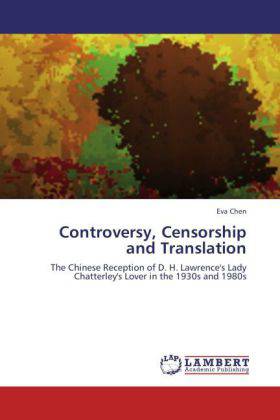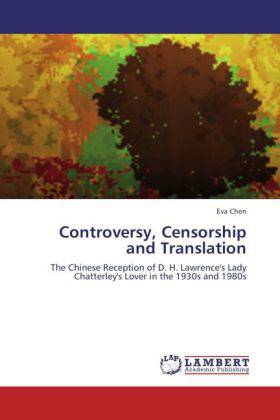
Door een staking bij bpost kan je online bestelling op dit moment iets langer onderweg zijn dan voorzien. Dringend iets nodig? Onze winkels ontvangen jou met open armen!
- Afhalen na 1 uur in een winkel met voorraad
- Gratis thuislevering in België vanaf € 30
- Ruim aanbod met 7 miljoen producten
Door een staking bij bpost kan je online bestelling op dit moment iets langer onderweg zijn dan voorzien. Dringend iets nodig? Onze winkels ontvangen jou met open armen!
- Afhalen na 1 uur in een winkel met voorraad
- Gratis thuislevering in België vanaf € 30
- Ruim aanbod met 7 miljoen producten
Zoeken
Controversy, Censorship and Translation
The Chinese Reception of D. H. Lawrence's Lady Chatterley's Lover in the 1930s and 1980s
Eva Chen
Paperback | Engels
€ 77,95
+ 155 punten
Omschrijving
This book examines the Chinese response to Lady Chatterley's Lover in both the 1930s and 1980s by focusing on attendant issues of state censorship, the publishing trade, the readership, translators and literary critics. Lawrence's novel was translated into Chinese in the 1930s, and its re-issue in the 1980s was the cause of a major censorship controversy where popular aspirations for greater freedom of speech, state backlash and an increasingly market-driven publishing industry all combined to catapult this literary classic into realms beyond the literary and into the cultural and socio-political. A study of the reception of this novel in China thus offers crucial insights into two important periods in China's long project toward modernization and nation-building.
Specificaties
Betrokkenen
- Auteur(s):
- Uitgeverij:
Inhoud
- Aantal bladzijden:
- 244
- Taal:
- Engels
Eigenschappen
- Productcode (EAN):
- 9783659207679
- Verschijningsdatum:
- 7/09/2012
- Uitvoering:
- Paperback
- Formaat:
- Trade paperback (VS)
- Afmetingen:
- 152 mm x 229 mm
- Gewicht:
- 362 g

Alleen bij Standaard Boekhandel
+ 155 punten op je klantenkaart van Standaard Boekhandel
Beoordelingen
We publiceren alleen reviews die voldoen aan de voorwaarden voor reviews. Bekijk onze voorwaarden voor reviews.











